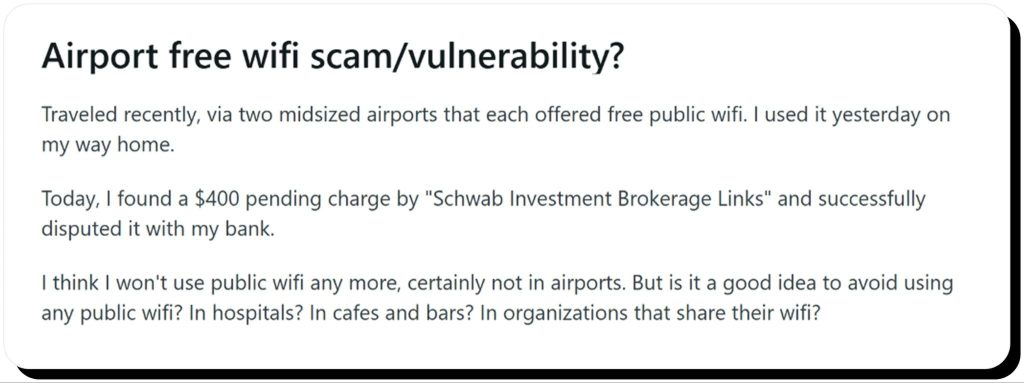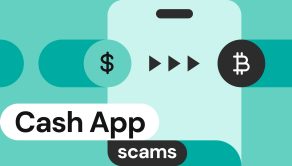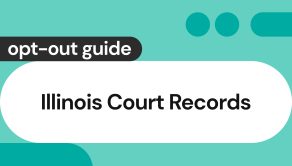Evil twin attack: what it is, how it works, and how to stay safe

An evil twin attack is a cyberattack that targets public Wi-Fi users by setting up a rogue wireless access point that imitates a legitimate network—at your local coffee shops, airports, public transit hubs, hotels, you name it. While the security of Wi-Fi connections has progressed greatly over the past decades, hackers still find new ways to trick users into connecting to these unsecured networks to steal credentials, banking information, and other sensitive information.
This article breaks down the evil twin attack definition, how dangerous it is, and how common users can protect themselves from evil twin phishing and financial losses by staying vigilant.
What is an evil twin attack?
An evil twin attack is a fake Wi-Fi network that a hacker sets up to look like a legitimate one by copying a real public Wi-Fi network along with its name, or the SSID (Service Set Identifier). For example, it can be a copy of a coffee shop’s “Free_Wi-Fi” or a hotel Wi-Fi. Users are tricked into thinking it’s a genuine connection and join it, only to have their credentials and browsing information accessed maliciously by the hacker.
How do hackers make people access a fake network?
- It looks familiar—especially if you’ve visited the place before and trusted its Wi-Fi network.
- Hackers can also make their rogue network’s signal stronger by moving closer to potential victims, so their devices identify this fake connection as a better one.
- If you happen to have connected to this evil twin network by accident before, your device might have remembered it and now connects to it automatically.
- Many assume that public Wi-Fi is generally safe and have no reservations about connecting to it to do business, check emails, or look up their banking balance.
But once you join an evil twin Wi-Fi network, the hackers can access and redirect some of the data you see unless it’s protected by a VPN or encryption (look for website URLs that start with HTTPS for secure browsing). As a result, you can unwillingly hand over your personal account credentials, online banking login, and other sensitive information to cybercriminals. If exploited, this data can enable them to commit identity theft, financial fraud, and account takeover.
How evil twin attacks work
The danger of evil twin Wi-Fi attacks is that they don’t always require complicated setups or advanced hacking knowledge, as in some cases Wi-Fi networks have been hacked using cheap homemade or readily available kits.
An evil twin Wi-Fi scam typically unfolds as follows:
- Step 1. Reconnaissance. The attacker scans for nearby Wi-Fi networks in popular public places (airports, train stations, hotel lounges, shopping malls, etc.) and identifies a target to replicate.
- Step 2. Setting up an evil twin access point. The attacker creates a fake Wi-Fi network using the same SSID (name) as the legitimate one, using tools like Wi-Fi Pineapple, Hostapd, or similar. In some cases, hackers also deauthenticate users from the real network so their devices automatically connect to the rogue one with a stronger signal.
- Step 3. Connecting to the network. As unaware users start logging into the fake network, the attacker gains access to the network data too and can monitor their browsing behavior and access all the information entered.
- Step 4. Data interception and theft. As the attacker controls the network, they can capture unencrypted data (on HTTP sites, emails, messages, etc.), perform man-in-the-middle attacks, inject malware, redirect users to phishing websites, and steal login credentials.
Examples of evil twin attacks
Security firms and news outlets alike repeatedly warn that airports, train stations, and other public hubs are popular targets for Wi-Fi hijackers.

In a recent notorious case, the Australian police charged a man who allegedly set up evil twin attacks at airports and on domestic flights with fake Wi-Fi access points, prompting victims to log into the fake network with their email or social media credentials.
The attacker mimicked legitimate networks’ names and offered a familiar-looking login portal where travellers unwittingly entered their credentials, only for them to be stolen. As a result, victims faced exposure of their personal information and account takeover, with far-reaching consequences if exploited.
Conferences and large events are also easy pickings for hackers as they widely publicize their free Wi-Fi on site, and many attendees trust the connection without additional verification. At the same time, even a single compromised attendee can expose corporate credentials, insider data, and private messages of the broader event audience.
Another evil twin attack example involves fake Wi-Fi networks set up at coffee shops, where many people routinely come to work on their laptops. Think of a hacker setting up a duplicate rogue network called “Starbucks_Free_WiFi” and you connect to it because it looks familiar. The attacker then logs all HTTP traffic and redirects users to a fake network login page to steal your credentials and exploit them for unauthorized access to your account.
How to recognize a fake Wi-Fi network
Evil twin Wi-Fi networks are designed to fool users, but there are cues that can help you spot and avoid evil twin access points in time:
- Mismatched or misspelled names, often listed next to a similarly named network, as attackers copy a real network’s name with subtle changes.
- No password protection, especially if the familiar legitimate network has usually required a password to connect.
- Unexpected login or popup screens. Fake captive portals may ask for your email, social media credentials, or payment card information before granting internet access.
- Weak or inconsistent signal. If the connection drops or fluctuates in speed, this can be a sign of a rogue network intercepting traffic.
- System warnings. If you get notifications about connection security or a security certificate that can’t be verified, don’t ignore them, as they can point to an unsecured connection to a fake network.

Why evil twin attacks are dangerous
Evil twin attacks are not just about eavesdropping on your traffic. Attackers can actually gain access to whatever you’re doing on your device and extract the information that’s most valuable to them. This opens the door to various potential cybercrimes:
- Credential theft, when you log into a fake network with your email or social media account.
- Two-factor authentication interception, as some hackers can capture temporary codes and gain access to your protected accounts.
- Malware injection by redirecting you to infected websites or silently installing spyware on your device to steal information continuously.
- Device profiling and tracking, when hackers log your device’s MAC address and identifiers for later targeting.
- Network auto-connection vulnerability. If you’ve already connected to a rogue network in the past, your device remembers it and connects again whenever in range, unless you explicitly set your device to “forget” the network.
All of these exploitation methods offer potential financial gains for hackers, much like other social engineering scams. That’s why they’re motivated to keep setting up such evil twin network traps, and people are still at risk of falling for them.
How to stay safe from evil twin attacks
You can stay away from evil twin Wi-Fi scams if you adopt these smart security habits:
- Avoid logging into personal accounts using public Wi-Fi. Whenever possible, don’t use public Wi-Fi for anything other than quick googling or map browsing. Skip activities that require entering passwords or exchanging confidential information.
- Stick to mobile data and set up your own hotspot for sensitive tasks. Use your phone’s cellular data instead of public Wi-Fi to access your email, do online banking, check private messages, and perform work-related tasks.
- Verify the legitimate network name in person. Confirm the real network name with an official representative of the venue providing the Wi-Fi connection.
- Turn off auto-connect. Only use this feature with your home network, or your device risks connecting to a rogue access point automatically.
- Use a trusted VPN (Virtual Private Network) for added security. If you have to use public Wi-Fi, make sure to browse via a VPN so all your traffic gets encrypted and remains inaccessible to hackers.
- Forget old and suspicious networks. Browse the list of networks your device remembers and remove those that you no longer need or don’t trust.
- Keep your devices updated. Installing the latest security patches helps protect your devices from known Wi-Fi and browser vulnerabilities.
What to do if you connected to a fake Wi‑Fi network
If you realize you’ve connected to a fake Wi-Fi network, either in the moment or afterwards, take these steps to sanitize your device and protect your data:
- Disconnect immediately by turning off your Wi-Fi or enabling airplane mode.
- Scan your device for malware. This will help detect any keyloggers or other spyware that could monitor your device activity and steal entered information.
- Change your passwords for all the affected accounts that you accessed while connected to the malicious network.
- Enable two-factor authentication for all critical accounts if you haven’t already.
- Monitor your accounts and email communication for signs of suspicious activity you don’t recognize.
- Report the incident to the public venue representative and consider engaging anti-fraud authorities and your local law enforcement agency if your data has been exploited and/or you lost money in the related fraud.
FAQs about evil twin attacks
Can I tell if I’m connected to an evil twin network?
It’s not always possible to tell if you’re connected to an evil twin network, as they’re designed to resemble legitimate ones. However, misspelled network names, unfamiliar login pages, and security certificate warnings are strong indicators of a fake Wi-Fi access point.
Are VPNs enough to protect me from evil twin attacks?
A VPN greatly reduces the risk of exposing your browsing data to hackers, but it doesn’t protect you from an evil twin phishing attack through spoofed websites or malware downloads.
Can mobile phones fall victim to evil twin attacks?
Yes, mobile phones are vulnerable to evil twin attacks, especially since they can auto-connect to remembered networks unless you disable this setting.
What are the legal consequences for creating an evil twin hotspot?
Offenders setting up evil twin hotspots can face criminal charges and severe legal penalties for committing cybercrime.





Dimitri is a tech entrepreneur and founder of Onerep, the first fully automated data removal service. Top cybersecurity CEO of 2021 by The Software Report.